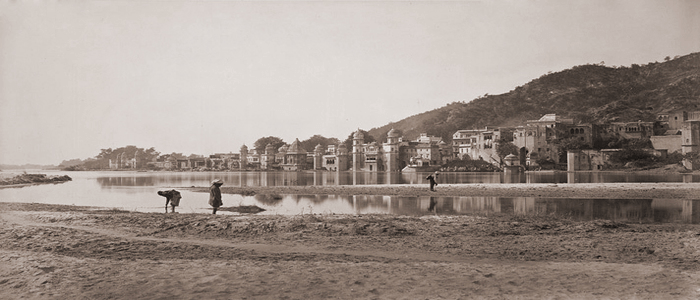According to Hindu mythology, Haridwar dates back to the time when Lord Brahma was creating the world. During the churning of the ocean by gods and demons, a few drops of nectar fell here while Garuda was carrying the pot. This made Haridwar a sacred place believed to offer salvation.

Connection with Gods
Haridwar is also special because Lord Vishnu, known as Hari, is said to have left his footprint here. The name “Har” in Haridwar also refers to Lord Shiva often called Har Har Mahadev.
Evidence from Old Discoveries and Scriptures
Terracotta pieces found here show that the city was active between 1200 and 1700 BC. But it’s even older — it’s mentioned in the Mahabharata, where Sage Dhaumya spoke to Yudhisthira about the place’s spiritual value. Sage Kapila and Agastya Muni also had ashrams here.
Old Rulers of Haridwar
The Mauryans ruled in Haridwar from 322 to 185 BCE. The Kushans then took over around the 1st and 2nd century AD. King Harshvardhan ruled here during 590 to 647 AD.
Timur’s Invasion
In 1398 AD, a ruler named Timur from Central Asia attacked the city.
Visit by Guru Nanak
Guru Nanak, the first Sikh Guru, bathed at Kushavarta Ghat during his pilgrimage.
Role of Maharaja Man Singh
Maharaja Man Singh of Amber, Rajasthan, played an important role in building today’s Haridwar. He helped develop the city and renovated important places like Har Ki Pauri.
Haridwar during Mughal Rule
During Mughal period Haridwar was known as Mayapur. It’s believed that Emperor Akbar drank water from Ganga here and paid his respects to the local ruler. He even opened a workshop to produce copper coins here.
Arrival of the British
The British came to Haridwar in the 1800s and built the Bhimgoda Dam around 1840. Later, in 1868, the city became a municipality and got its railway line. After India gained independence, Haridwar became an important starting point for Char Dham pilgrimages in Uttarakhand.
Maya Devi Temple and Shaktipeeth
Haridwar is not only important for devotees of Lord Vishnu and Lord Shiva, but it’s also a major Shaktipeeth. The Maya Devi Temple here is believed to be the place where Goddess Sati’s navel fell when Lord Shiva was carrying her body. The temple seen today was built in the 11th century, but there may have been an older temple before it.
Historical Significance
- Haridwar has a long spiritual history and its deep connection to the past still makes it a special and holy place today.
- According to legend Garuda accidentally dropped a few drops of nectar in Haridwar while flying. That’s why this city became one of the most sacred places and a main site for the Kumbh Mela.
- Mythology says Bhagirath brought the Ganga to Earth. People think that bathing in the river removes sins and gives moksha (salvation).
- In the story of Samudra Manthan, Dhanvantari brought the nectar of life. Haridwar is still known as a place for Ayurvedic treatments.
- The Chinese traveler Hiuen Tsang visited the city in 629 AD and mentioned it as “Mo Yu Lo” in his travel notes.

 Call
Call WhatsApp
WhatsApp Enquiry
Enquiry




Leave a Reply